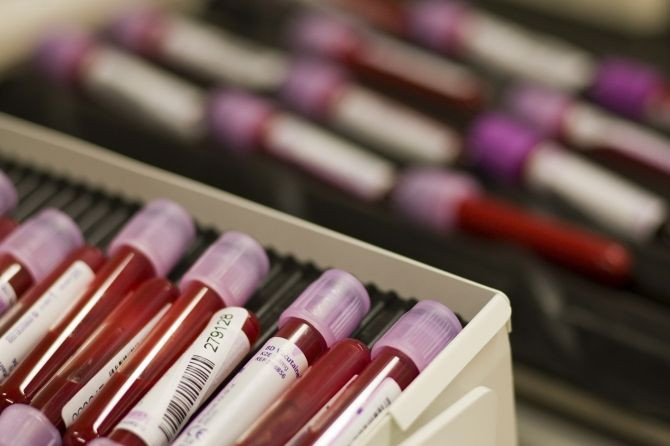Harry Potter's Diary Inspires New Blood Test Device

Australian researchers have introduced a blood test that writes the blood type of a person pretty much like the self-writing diary in J.K Rowling’s book “Harry Potter and the Chamber of Secrets”.
They say that this test is efficient and quick when compared to the tests done in a laboratory.
The test could be used in developing nations where lack of skilled technicians makes it difficult to get an accurate blood test done during emergencies.
The test can be performed in critical situations like an accident or natural disaster.
"We found that more than 80 percent of the population... could not interpret the result even if the result from a perfectly functioned blood typing assay was presented to them. But with a device that can spell out the patient's blood type in written text, people will know their blood type easily,” John Brennan, Canada Research Chair in Bioanalytical Chemistry, told BBC.
The blood test works on the same principle as a regular ABO blood test works where antigens in the blood clump to the antibodies in the test. In the new blood test device, the paper is printed with a hydrophobic with four open windows that are filled with antibodies.
The windows are shaped like letters “A” and “B”, “O” overlapping “X” and the fourth window is shaped like a plus sign.
When a drop of blood is placed in the windows, the blood cells clump with their corresponding antibodies and are absorbed in the paper giving it a red tint. When the paper is washed with saline, the test result remains visible.
A, B and AB type can be analyzed this way but O has neither antigens, so the researchers came up with a little trick. They shaped a window as “X” and filled it with antibodies for A and B. They then printed “O” with water-proof ink over “X”, so test results A, B and AB would cross out O. But, when no antigen is present, “X” is clear and “O” can be seen indicating blood type-O.
RhD factor can be determined too. For this, the researchers shaped the fourth window like a vertical line and filled it with antibodies against RhD and printed a waterproof horizontal line over it. If the cells in blood sample clumps with antibodies in the vertical line then the vertical line gets a tint. Together the vertical and horizontal lines make a “plus” sign indicating a positive test. If there is no Rh factor, vertical line remains colorless, only the horizontal line is visible (minus sign) indicating a negative test.
"Studies show that errors are linked mostly to incorrect registration of the results to the blood sample, or human error, .In developing regions and remote areas, mainstream technologies are not available, and non-mainstream methods are used. Misinterpretation of assay results by less-trained health personnel is likely to be a major worry," said Professor Wei Shen, lead author of the study, reports BBC.
The study is published in the journal Angewandte Chemie.
Published by Medicaldaily.com



























